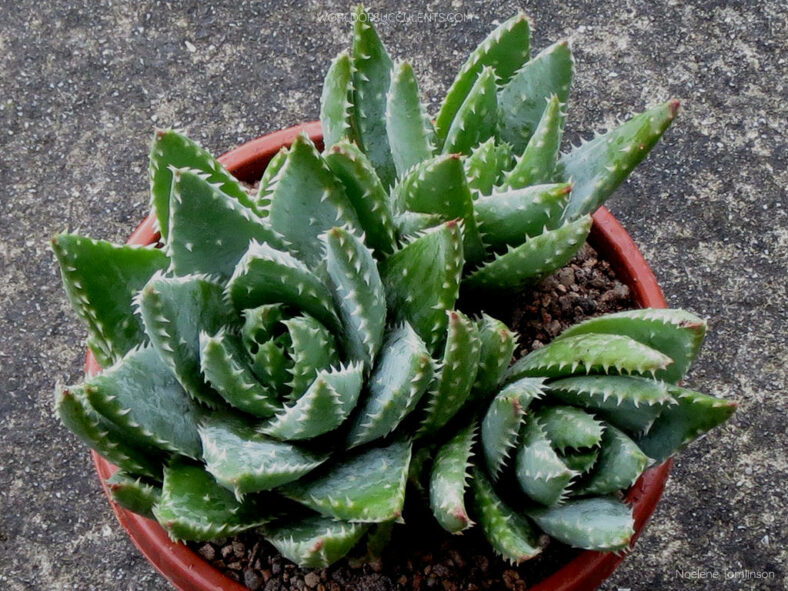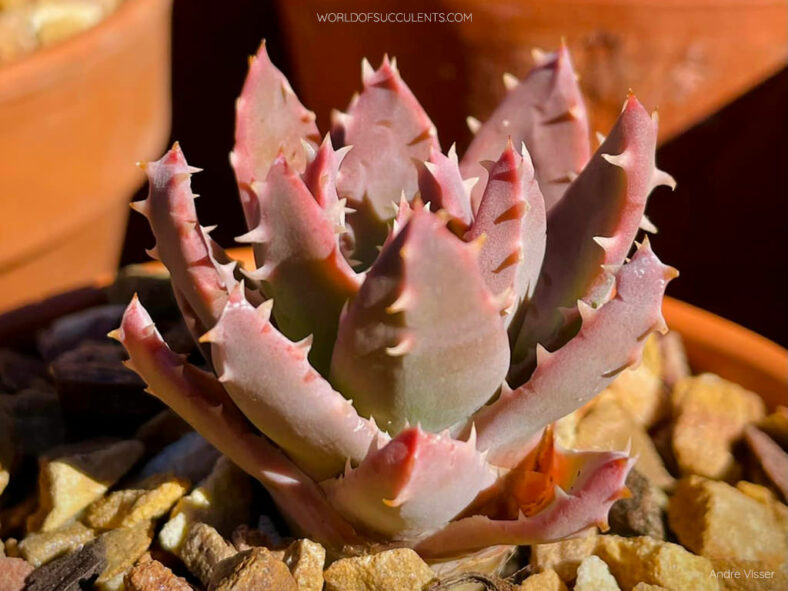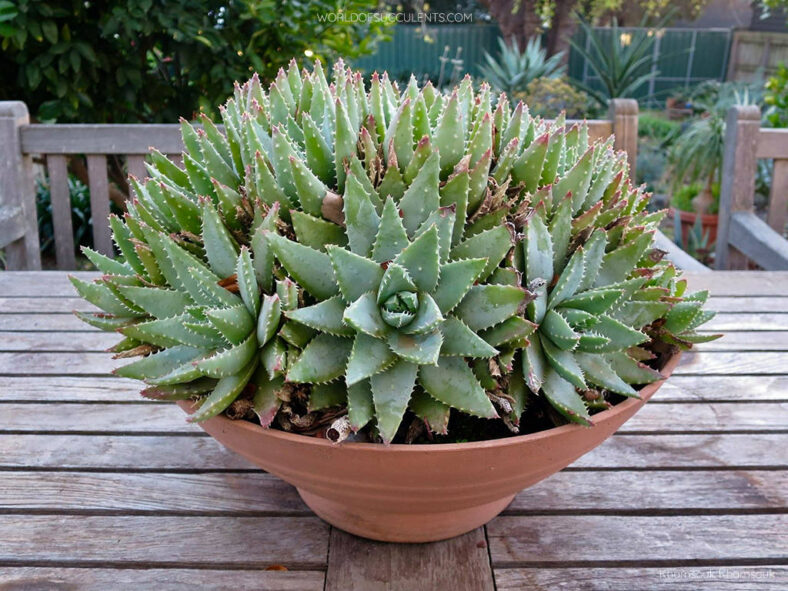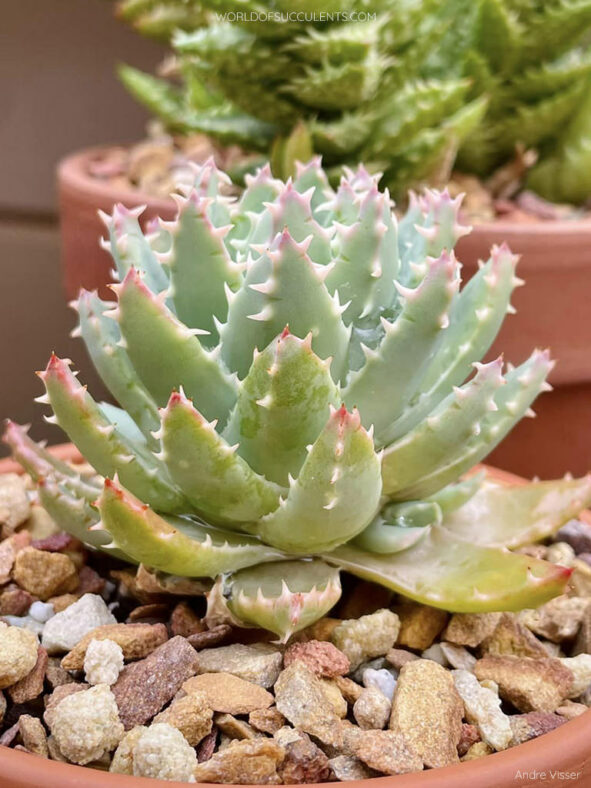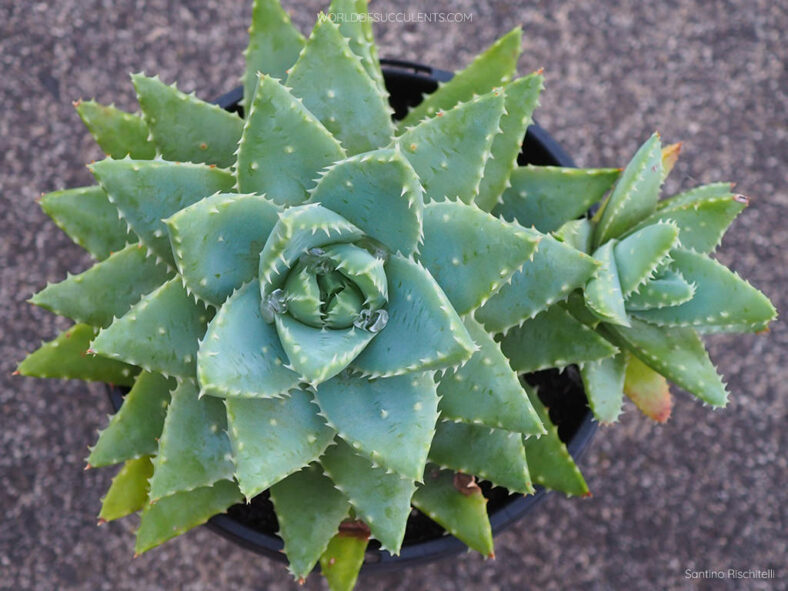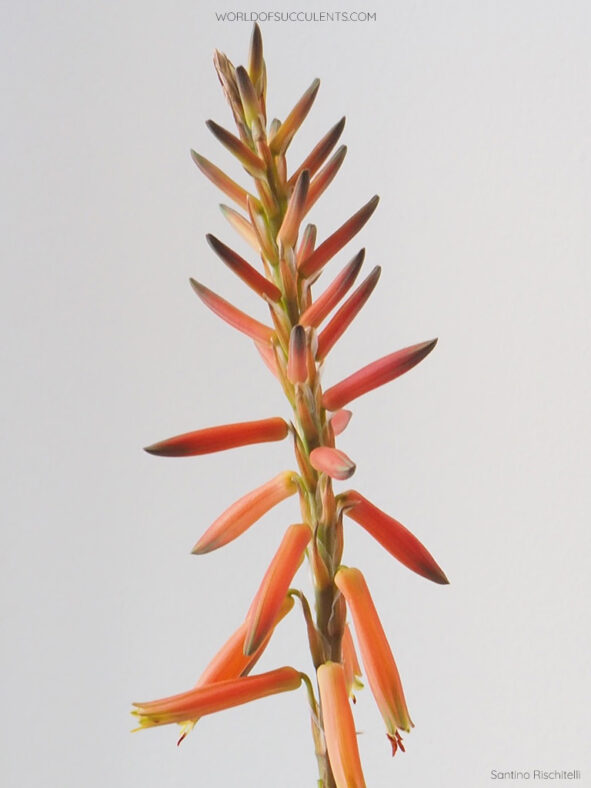Aloe brevifolia is listed as threatened in its natural habitat but is widely popular as an ornamental plant in rockeries and desert gardens worldwide.
Scientific Name
Aloe brevifolia Mill.
Common Name(s)
Blue Aloe, Crocodile Jaws, Crocodile Plant, Short-leaved Aloe
Scientific Classification
Family: Asphodelaceae
Subfamily: Asphodeloideae
Genus: Aloe
Etymology
The specific epithet "brevifolia" (pronounced "brev-ee-FOH-lee-uh") means "short-leafed, small-leafed" and refers to the relatively short leaves of this species.
Origin
Aloe brevifolia is native to South Africa. It grows in shales and coastal limestone from Botrivier to Riversdale in the Western Cape province.
Description
Aloe brevifolia is a small succulent that forms dense clumps of stemless rosettes of glaucous, lance-shaped leaves. The rosettes can reach a diameter of 4 inches (10 cm) and produce offsets from the base, forming a dense clump over time. The leaves, which are thick and fleshy, can measure up to 4 inches (10 cm) long and 2 inches (5 cm) broad. They have a flat to slightly convex upper surface without spots or spines and a convex lower surface with few soft spines in the median line or irregularly scattered in the upper third. The leaf margins are armed with firm, whitish, deltoid teeth. The leaves take on red hues when exposed to full sun.
In late spring, Aloe brevifolia produces scarlet-pink flowers in simple inflorescences with a conical raceme at the end of the peduncle with sterile bracts. The flowers are slightly curved and can reach up to 1.6 inches (4 cm) in length. The inflorescence can grow up to 24 inches (60 cm) tall, with the raceme gradually denser upwards, reaching up to 6 inches (15 cm) in height and 2.8 inches (7 cm) in diameter.
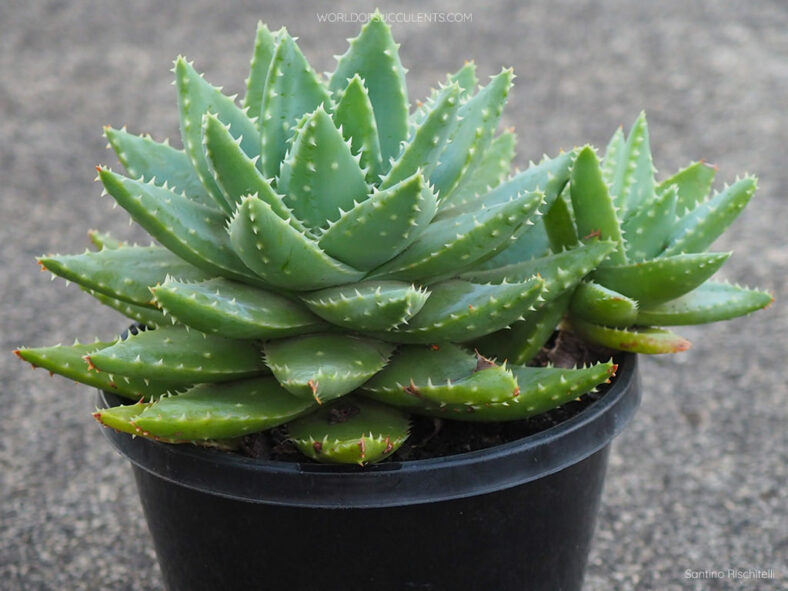
Varieties of Aloe brevifolia
- Aloe brevifolia var. brevifolia
- Aloe brevifolia var. depressa
- Aloe brevifolia f. variegata
Hybrids of Aloe brevifolia
How to Grow and Care for Aloe brevifolia
Light: When growing Aloe brevifolia indoors, place it in a window with plenty of bright, indirect light. Rotate the pot once or twice a week to ensure all sides of the plant receive equal lighting. Outdoors, the plant prefers light shade, especially during the hottest parts of the day.
Soil: Great drainage is essential for growing this plant because too much moisture for an extended period can cause root rot. Use commercial soil for succulents, or make your own well-draining mix.
Temperature: When temperatures shift below 50°F (10°C), it is time to bring this plant inside. It tolerates heat fairly well but will not survive a hard frost. Aloe brevifolia grows best in USDA Plant Hardiness Zones 9b to 11b, with average minimum winter temperatures ranging from 25°F to 50°F (-3.9°C to 10°C).
Watering: This plant needs regular watering but can tolerate short periods of drought. Water deeply, but only when the soil is completely dry to the touch, and do not let water stand in the rosettes. Cut back on watering during the winter months.
Fertilizing: Although it generally does not require fertilizer, Aloe brevifolia will benefit from extra nutrients. Use a water-soluble fertilizer diluted to half the recommended strength.
Repotting: Repot only as needed during spring. Pick a container that is one size larger and has drainage holes.
Propagation: To propagate Aloe brevifolia, remove the offsets from a mature plant from late spring to early summer. It is also easy to start from seeds. For best results, sow the seeds during the warm months.
Learn more at How to Grow and Care for Aloe.
Toxicity of Aloe brevifolia
Aloe brevifolia is non-toxic to people but is mildly to moderately toxic to pets.
Links
- Back to genus Aloe
- Succupedia: Browse succulents by Scientific Name, Common Name, Genus, Family, USDA Hardiness Zone, Origin, or cacti by Genus
Photo Gallery
Click on a photo to see a larger version.
